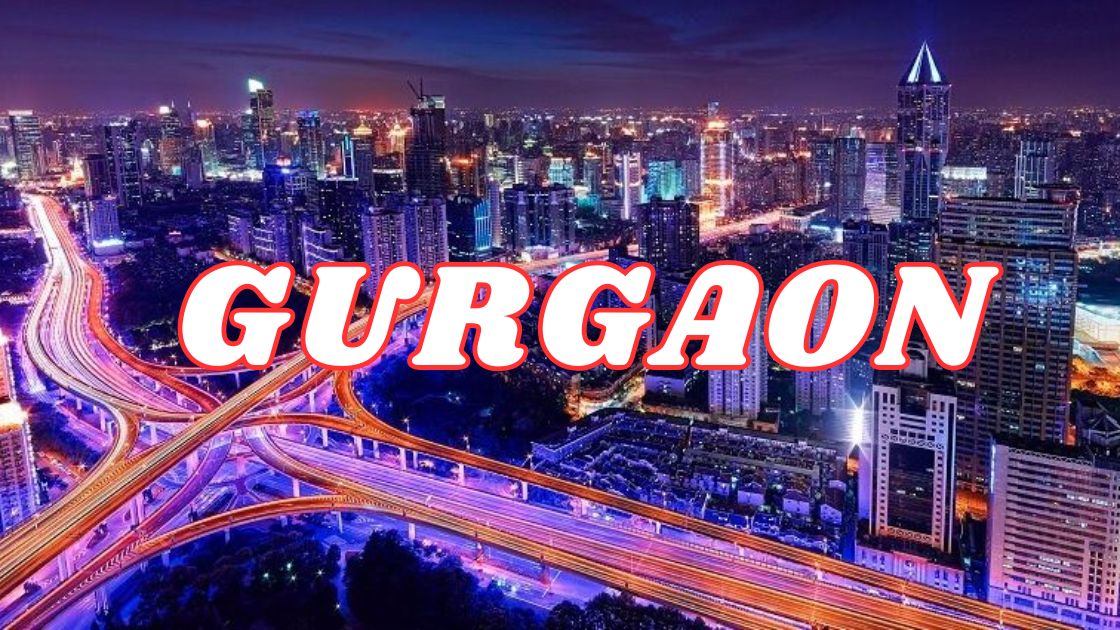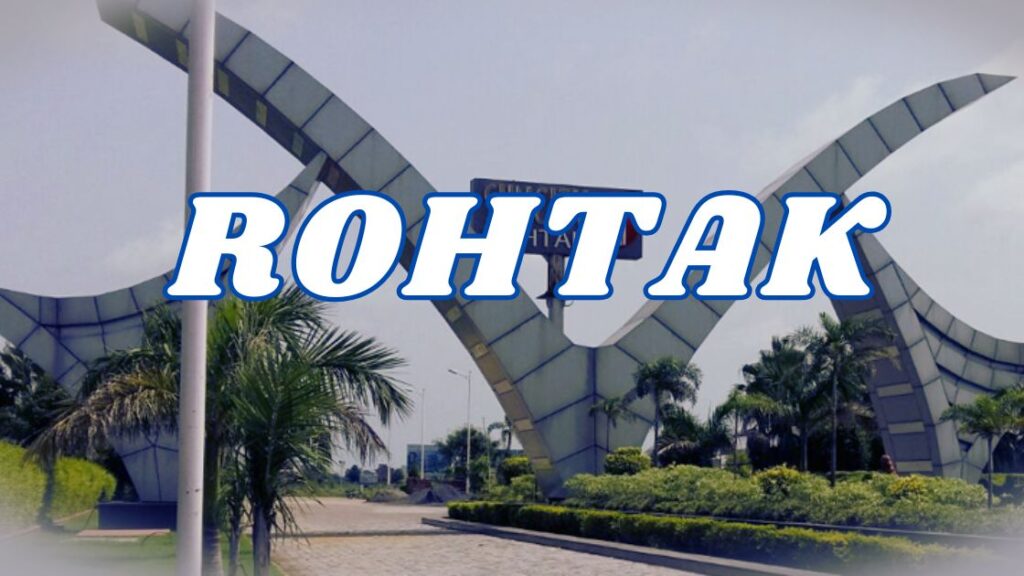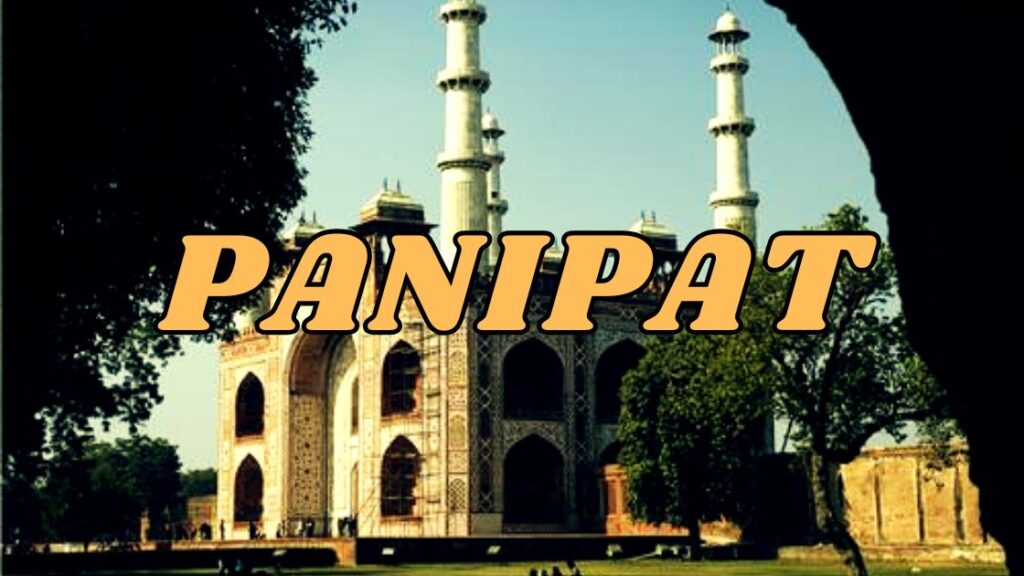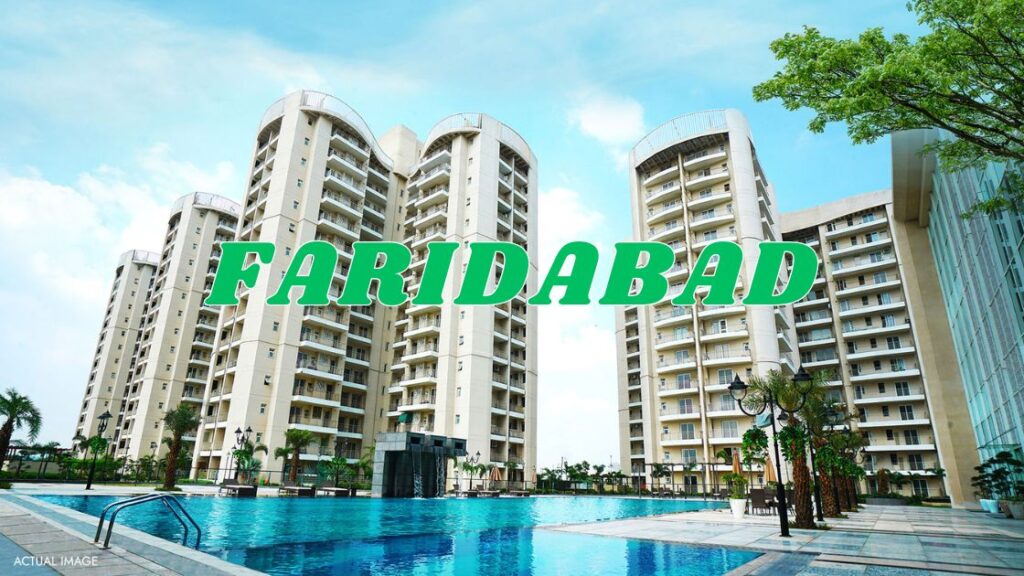Gurgaon, officially known as Gurugram, is a prominent city in the northern Indian state of Haryana, situated approximately 30 kilometers southwest of New Delhi. As of 2025, the city’s population is projected to reach around 1.318 million, reflecting its rapid growth over the past decades.
Gurgaon has established itself as a major information technology and management consulting center in India. The city hosts numerous Fortune 500 companies and has become a significant destination for medical tourism and luxury tourism. Its economic ascent began in the 1970s with Maruti Suzuki India Limited setting up a manufacturing plant, followed by General Electric initiating business outsourcing operations, which spurred further industrial and commercial development.
Gurgaon – A Dynamic Growth Hub Shaping India’s Future
The city’s population has seen substantial growth, increasing from 876,969 in 2011 to an estimated 1.318 million in 2025. This surge has led to a diverse and dynamic urban environment. The literacy rate stands at 87.37%, with male literacy at 90.91% and female literacy at 83.21%. However, the sex ratio is 848 females per 1,000 males, which is below the national urban average.
To accommodate the burgeoning population, Gurgaon has expanded its residential and commercial infrastructure. The Gurgaon-Manesar complex is projected to house nearly 4 million people by 2025. Plans include reserving approximately 15,148 hectares for residential purposes and 1,404 hectares for commercial development, featuring large malls and corporate complexes.
Despite its rapid development, Gurgaon faces several challenges:
- Infrastructure Strain: The swift population growth has put pressure on the city’s infrastructure, leading to issues such as traffic congestion and inadequate public transportation.
- Environmental Concerns: High levels of air pollution and flooding due to limited drainage capacity are significant environmental challenges.
- Social Issues: The city grapples with income inequality and a lower-than-average sex ratio.
History of Gurugram
Gurugram, formerly known as Gurgaon, has deep historical and mythological significance dating back to the times of the Mahabharata. According to Hindu mythology, the land was gifted to Guru Dron Acharya, the teacher of the Pandavas and Kauravas, as Guru Dakshina. The name “Gurugram” translates to “village of the guru,” a reference to Dronacharya’s influence over the region. The site is believed to have been an important location for the training of Kshatriya warriors, making it a pivotal center for warfare education in ancient India.
Apart from its mythological connections, Gurugram was historically part of the Kuru Kingdom, which was one of the most powerful dynasties in Vedic India. The Yadu tribe, particularly the Ahir clan, played a crucial role in shaping the region’s socio-political landscape. The area’s rich history is also evident in its archaeological remains, including pottery, tools, and inscriptions that suggest early human settlements and active trade routes.
During the Mauryan era (4th-2nd century BCE), Gurugram came under the rule of Chandragupta Maurya, and later Ashoka the Great, who promoted Buddhism and built infrastructure such as roads and rest houses. The region saw continued development under the Gupta Empire (4th-6th century CE), a golden age for art, culture, and literature.

Despite its early prominence, Gurugram remained a relatively small settlement through subsequent centuries, overshadowed by its neighboring city, Delhi, which served as the political and cultural center of North India.
Medieval Period and Delhi Sultanate Influence
In the 12th century, historical texts like Prithviraja Vijaya mention Gurugram as Gudapura, a territory controlled by the Chauhan dynasty. Prithviraj Chauhan, one of the most renowned Rajput kings, ruled this region before his defeat by Muhammad Ghori in 1192 CE. With the fall of the Rajputs, the region came under the control of the Delhi Sultanate, beginning a long period of Islamic rule.

Throughout the Khilji, Tughlaq, and Lodhi dynasties (13th-16th centuries), Gurugram was part of the larger administrative division known as the Jharsa paragana. However, it remained a relatively minor outpost, primarily serving as an agricultural hub supplying resources to Delhi.
By the 16th century, during the reign of the Mughal Empire, Gurugram saw increased trade and infrastructure development. However, it remained overshadowed by Delhi, which became the empire’s grand capital under Akbar, Jahangir, and Shah Jahan. The construction of major trade routes connecting Delhi with Rajasthan and Punjab further integrated Gurugram into the economic framework of North India.

Notable historical sites from this period include:
- Alawadi Mosque (built in the 18th century)
- Bad Shahpur Baloi, a stepwell built in 1905 for water conservation
- Bhindis Fort, an important military post during the late Mughal period
Despite its strategic location, Gurugram remained a rural settlement with minimal urbanization until the advent of British rule.
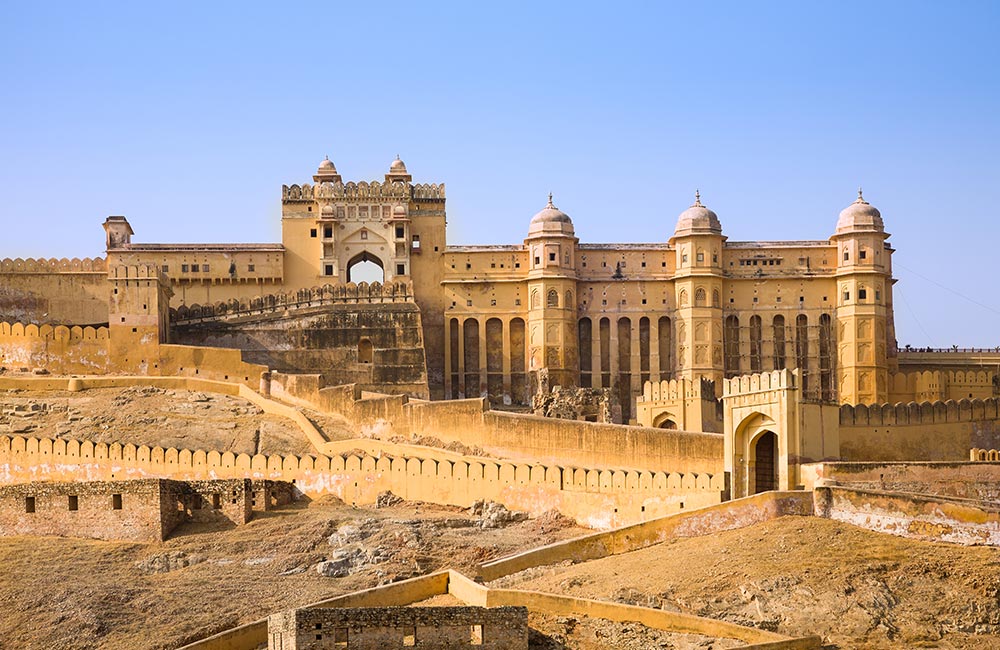

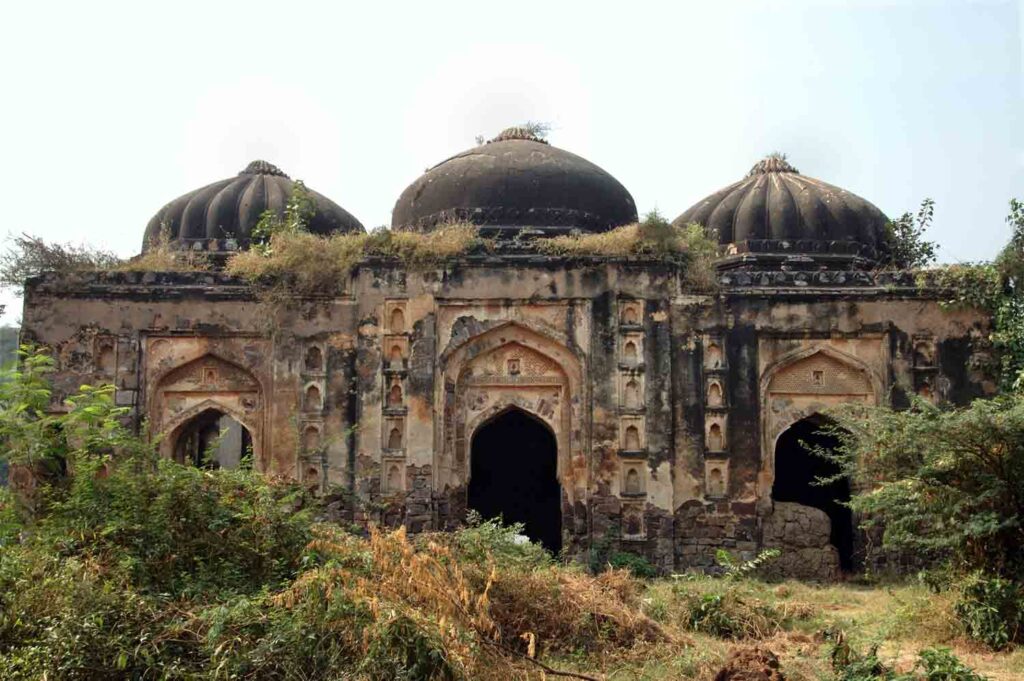
British Colonial Era and Early Urbanization
During British colonial rule, Gurugram became part of the Punjab Province under the British Raj. It was incorporated into the Jharsa paragana, and while its development remained slow compared to Delhi, it served as an important center for administration and revenue collection.
In 1836, after the death of Begum Samru, a wealthy landowner and ruler of the region, the British took direct control of Gurugram. They introduced administrative reforms, but the area remained largely agrarian. The British also built key institutions such as:
- Civil Lines in Jharsa
- A cavalry cantonment in Hidayatpur
- Church of the Epiphany (1925), a British-era place of worship

One of the most significant developments during this time was the construction of railway lines connecting Gurugram with Delhi and other important towns. However, even by the time of India’s independence in 1947, Gurugram remained a small town with little industrialization or commercial activity.
Post-Independence Transformation (1947-2000s)
After India gained independence in 1947, Gurugram continued to be a small agricultural town in Haryana. It was largely ignored in terms of industrial development, with Faridabad and Panipat emerging as the major industrial hubs of the state.
The first major step toward Gurugram’s transformation occurred in the 1970s when Maruti Suzuki, India’s first major automobile manufacturer, set up a manufacturing plant in the region. This marked the beginning of industrial growth and led to a rise in employment opportunities.
The 1990s saw a major economic shift with the arrival of General Electric (GE) and its outsourcing business (now known as Genpact), which collaborated with DLF, a real estate giant. This partnership laid the foundation for the IT and corporate boom in the region. By the early 2000s, Gurugram had transformed into a major commercial hub, attracting companies from around the world.
Modern-Day Gurugram and its Economic Boom
Today, Gurugram is one of India’s leading financial and technology hubs, home to over 250 Fortune 500 companies and numerous multinational corporations. Its rapid urbanization and real estate development have made it one of the most expensive and sought-after cities for business and lifestyle in India.
Key highlights of modern Gurugram include:
- Cyber City and Udyog Vihar, major IT and corporate hubs
- Gurugram Rapid Metro, India’s first privately financed metro system
- World-class shopping malls, luxury residential complexes, and commercial skyscrapers
- Smart city projects aiming to integrate technology with urban planning
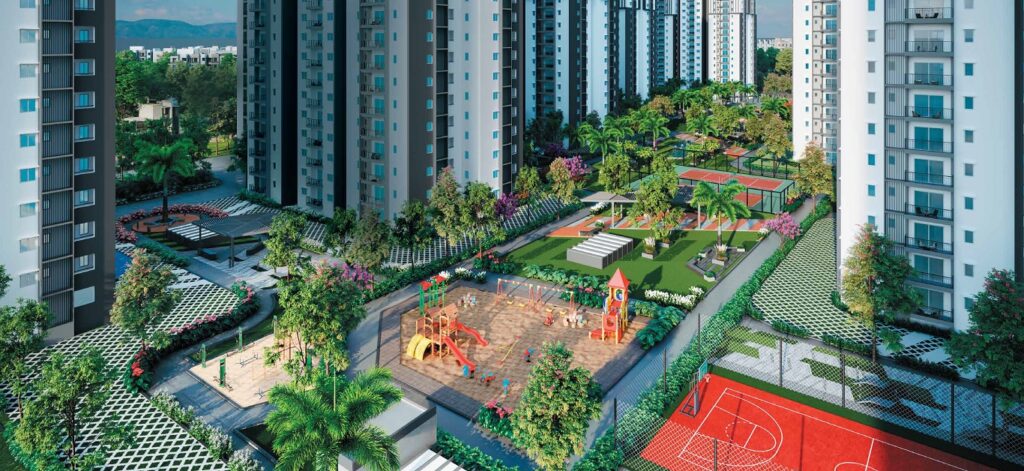
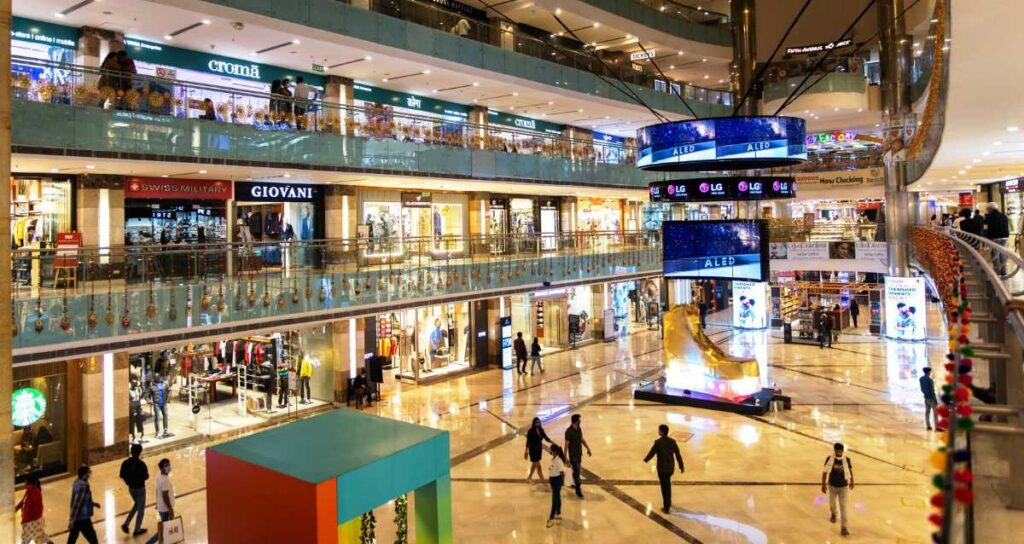
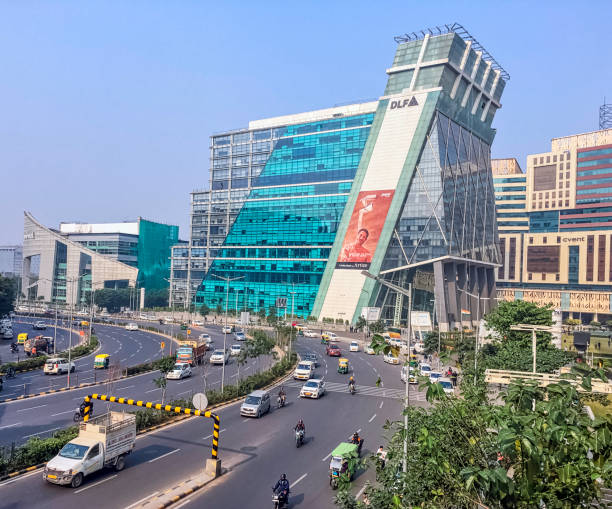
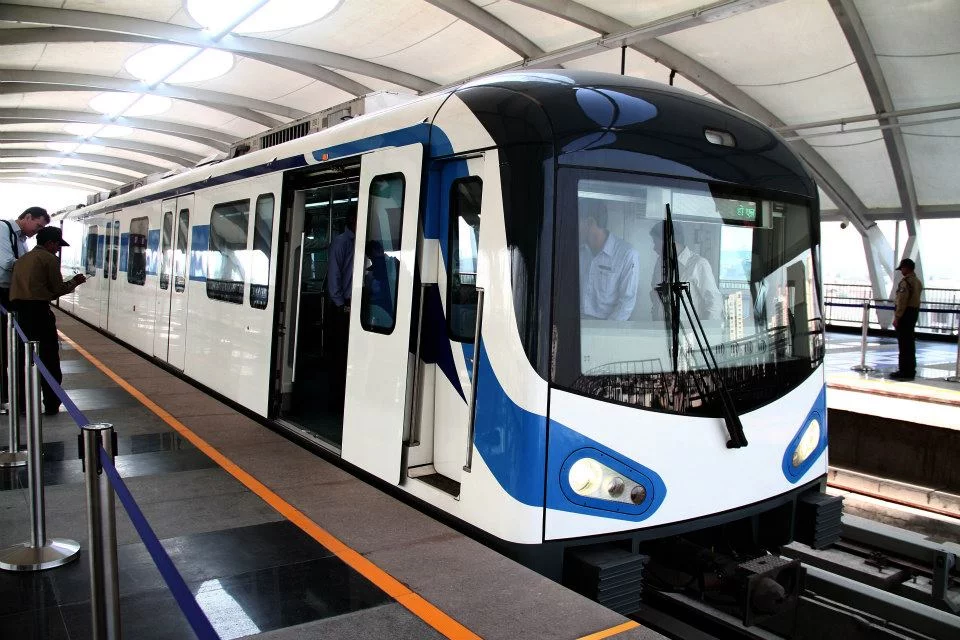
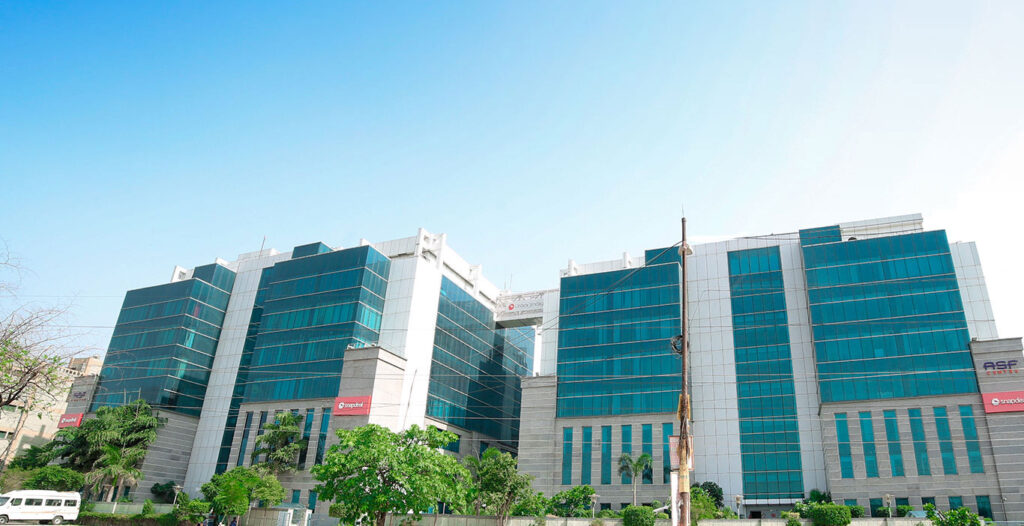
Gurugram is also known for its golf courses, luxury hotels, and international schools, making it one of the most developed and cosmopolitan cities in India. However, challenges such as traffic congestion, air pollution, and water scarcity remain major issues that need to be addressed.
Renaming from Gurgaon to Gurugram
In 2016, the Haryana government officially renamed Gurgaon to Gurugram to honor its mythological roots linked to Guru Dron Acharya. This decision aimed to restore its cultural heritage and historical significance. Despite the official name change, many residents and businesses continue to use the name Gurgaon in daily conversation and branding.
Geography of Gurgaon
Gurgaon, officially known as Gurugram, is a major city in the Gurgaon district of Haryana, India. It is situated in the southeastern part of the state and the northern region of the country. Gurgaon lies on the border of Delhi, with New Delhi to its northeast. The city covers an area of 232 square kilometers (90 sq mi) and is a vital part of the National Capital Region (NCR). Over the past two decades, Gurgaon has transformed from a modest suburban area into one of India’s largest financial and technology hubs, housing headquarters for several multinational companies.
The rapid urbanization and industrial growth of Gurgaon have significantly impacted its geography. The cityscape is marked by high-rise buildings, IT parks, shopping malls, and modern infrastructure. It also has several planned and upcoming smart city projects. However, the haphazard urban expansion has raised environmental concerns, including depletion of groundwater levels and reduction of green spaces.
Topography
The topography of Gurgaon is primarily flat, with an average elevation of 217 meters (712 ft) above sea level. The city is located on the Indo-Gangetic Plain, but its proximity to the Aravalli Hills influences its landscape. The Aravalli range, which lies to the south and southwest of the city, acts as a natural barrier against desertification, helping in climate regulation. The terrain includes patches of rocky land, dry riverbeds, and seasonal water bodies that serve as natural drainage channels.

Gurgaon is prone to urban flooding during monsoons due to poor drainage systems and extensive concretization. The low-lying areas, particularly near the Najafgarh drain, experience waterlogging during heavy rains. Efforts are underway to improve drainage and water management systems, but unplanned urban growth continues to pose challenges.
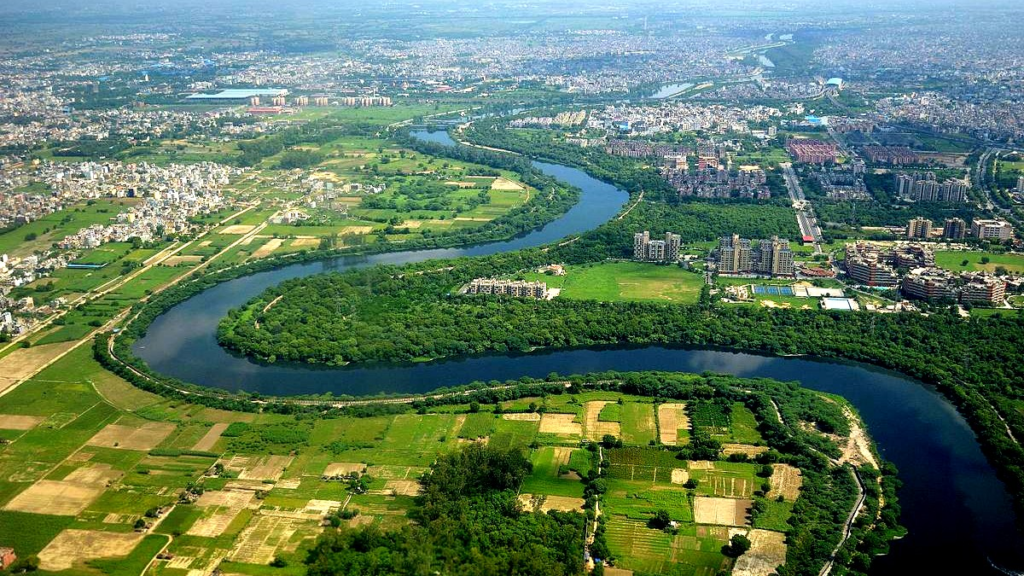
Ecology and Biodiversity
Gurgaon is home to diverse flora and fauna, with significant ecological hotspots, wetlands, and forests. It lies on the Sahibi River Basin, a tributary of the Yamuna River, originating from the Aravalli range in Rajasthan and flowing through Haryana and Delhi. Though the Sahibi River’s flow has reduced due to urbanization and climate change, its course still supports critical wetlands and Important Bird Areas (IBA).
Major Ecological Sites in Gurgaon:
- Sultanpur National Park – A designated Ramsar site, Sultanpur is a haven for migratory birds, including the Siberian Crane, Flamingos, Bar-headed Goose, and Painted Stork.

2. Basai Wetland – Known for its rich biodiversity, this wetland is under threat from construction and encroachment.

- Najafgarh Lake and Drain Bird Sanctuary – Provides shelter to several endangered bird species and is an important ecological zone.

- Mangar Bani Forest – A sacred Grove Forest preserved by the Gurjar community, providing a crucial green lung between Gurgaon and Faridabad.

3. Ghata and Badshahpur Lakes – Vital for groundwater recharge but are increasingly shrinking due to urban development.

4. Outfall Drain Number 6 & 8 – Part of the Sahibi River and its tributaries, these areas house wetlands and forests that support rare wildlife.
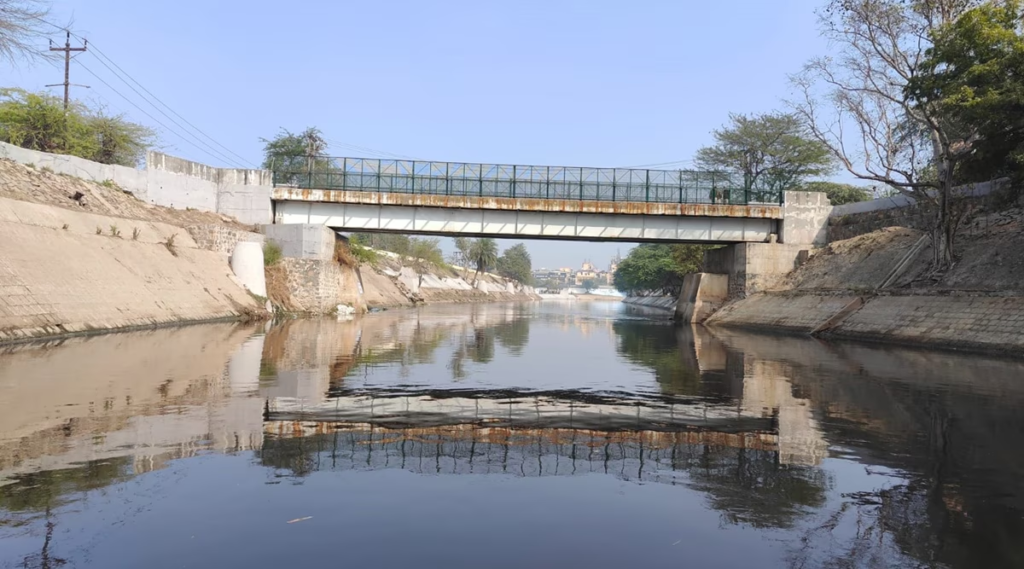
Despite these ecological treasures, Gurgaon’s rapid real estate growth and industrial expansion have led to habitat destruction. Deforestation, pollution, and water scarcity are major environmental concerns. Conservation efforts, including afforestation programs and wetland restoration projects, are being implemented to mitigate these impacts.
Climate of Gurgaon
Gurgaon experiences a composite climate, which is a mix of a humid subtropical climate and a hot semi-arid climate. The city has four distinct seasons:
- Spring (February–March) – Pleasant weather with moderate temperatures.
- Summer (April–August) – Extremely hot and humid, with June temperatures reaching up to 48.1°C (118.6°F).
- Monsoon (June–September) – Receives around 648.6 mm (25.5 in) of annual rainfall, mostly from Southwest Monsoons.
- Autumn (October–November) – Transition period with moderate temperatures.
- Winter (December–January) – Cold and foggy, with occasional Western Disturbance-induced rainfalls.
Temperature Extremes:
- Highest Temperature: 49.0°C (120.2°F) (Recorded on May 10, 1966) and 48.1°C (118.6°F) on May 15, 2022.
- Lowest Temperature: -0.4°C (31.3°F) (Recorded on December 5, 1966).
Rainfall & Humidity:
Gurgaon’s rainfall is mainly concentrated during July and August, with occasional thunderstorms. The average humidity is 40-50%, but during the monsoon, it can rise up to 70% or more. Winters see lower humidity levels, with foggy conditions often disrupting transportation and air quality.
Climate Change Impact:
With rising global temperatures, Gurgaon has experienced an increase in extreme weather events, including heatwaves and unseasonal rainfall. Air pollution, primarily due to vehicle emissions, industrial pollution, and crop burning in nearby states, has worsened winter conditions, often leading to hazardous AQI levels. The government and private entities are working on solutions like green energy adoption, improved urban planning, and air purification technologies to combat environmental degradation.
Demographics of Gurgaon
Gurgaon, one of the most rapidly growing urban centers in India, had an estimated population of 876,969, according to the 2011 Census of India. Over the past decade, the city has experienced exponential growth due to its status as a corporate and industrial hub, significantly influencing its demographic structure.
Religion in Gurgaon
Gurgaon is a multi-religious city, with Hinduism being the dominant faith. Below is a breakdown of the religious composition based on the 2011 Census:
- Hinduism – 91.88%
- Islam – 4.57%
- Sikhism – 1.60%
- Christianity – 0.95%
- Jainism – 0.79%
- Other or Not Stated – 0.21%
Apart from these major religions, Gurgaon is also home to followers of Buddhism, Faith, and other spiritual traditions. The city boasts numerous places of worship, including temples, gurdwaras, mosques, and churches, catering to the diverse religious population.
One of the most revered temples in Gurgaon is Sheetal Mata Mandir, located in the heart of the city. Dedicated to Kripi, the wife of Guru Dron Acharya, this temple attracts devotees seeking blessings. Another notable religious site is the Sai Ka Atangan Temple, which spans 36,000 square feet and houses a life-size idol of Shirdi Sai Baba.
Languages Spoken in Gurgaon
Gurgaon is a linguistically diverse city where Hindi serves as the most widely spoken language. As per the 2011 Census, the primary languages spoken in Gurgaon include:
- Hindi – 74.18%
- Haryanvi – 9.02%
- Punjabi – 3.78%
- Bengali – 3.59%
- Bhojpuri – 1.95%
- Other Languages – 7.48%
Apart from these, Gurgaon is also home to a considerable population of expatriates and professionals from various states of India, leading to a presence of languages such as Marathi, Tamil, Telugu, Kannada, and Malayalam in daily communication.
Cityscape and Architecture
Gurgaon is known for its modern skyline, featuring some of India’s tallest and most architecturally significant buildings. The city is home to an estimated 1,892 high-rises, with corporate hubs and luxury residences shaping its distinctive urban landscape.

One of the city’s iconic structures is Cyber Green, located in the heart of Gurgaon’s business district, showcasing a blend of contemporary architecture and eco-friendly design. Another landmark is the Gateway Towers, an impressive structure contributing to the city’s cosmopolitan look.

Neighborhoods in Gurgaon
Gurgaon is divided into 36 municipal wards, each consisting of multiple residential and commercial blocks. The city primarily features attached housing, but there has been a rising demand for high-rise apartments, condominiums, and luxury residential towers.
Some of the prominent localities in Gurgaon include:
- DLF Cyber City – The heart of Gurgaon’s commercial hub
- Golf Course Road – Home to premium residential and corporate offices
- MG Road – A bustling area with malls, entertainment zones, and offices
- Sushant Lok & South City – Well-developed residential neighborhoods
- Sohna Road – A rapidly growing area with commercial and residential developments
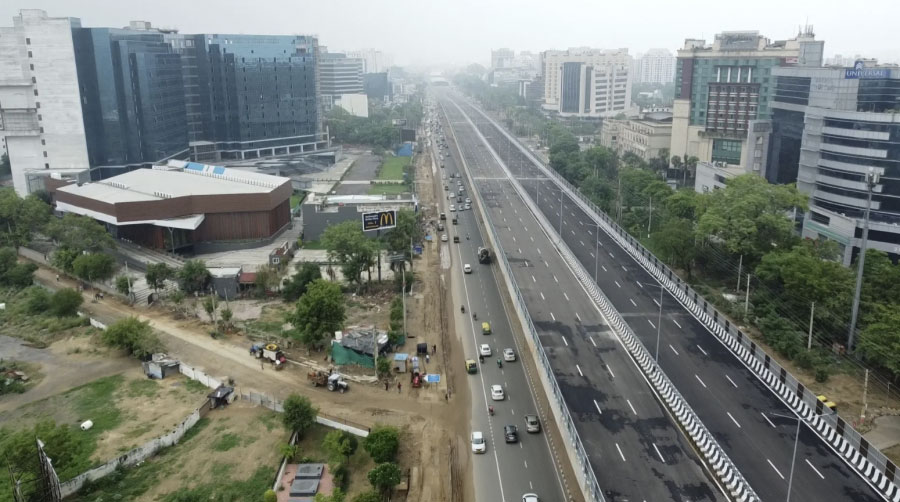
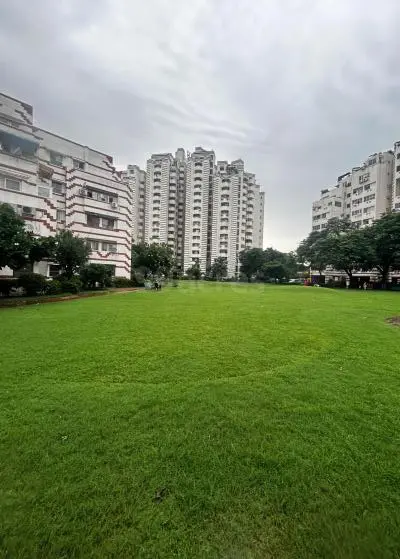
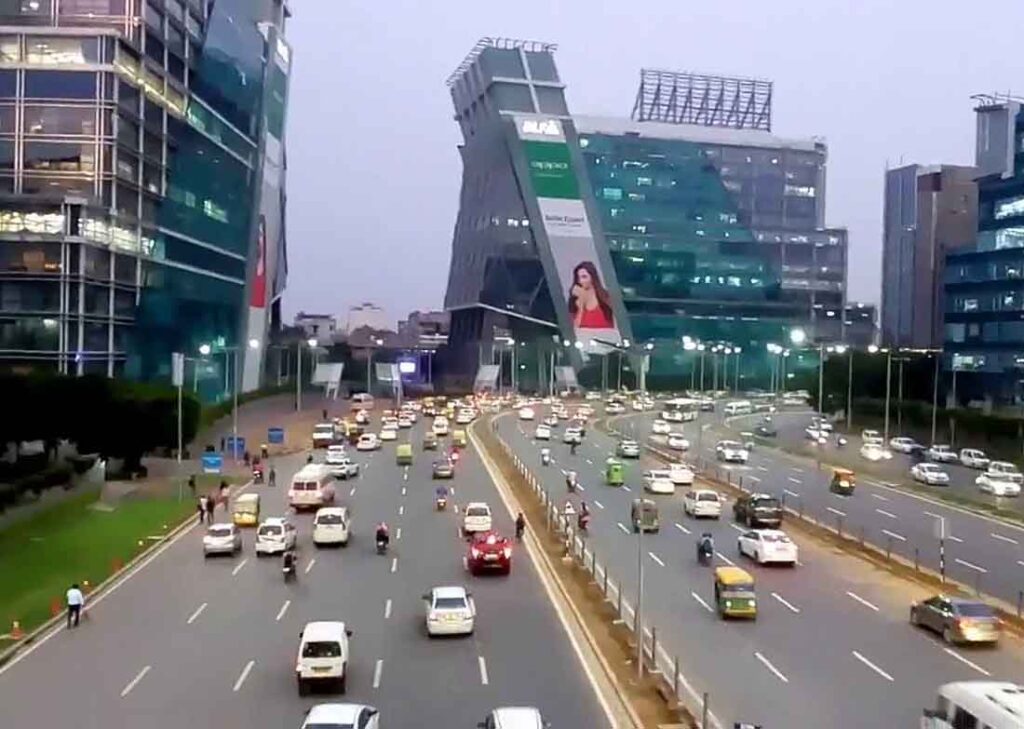
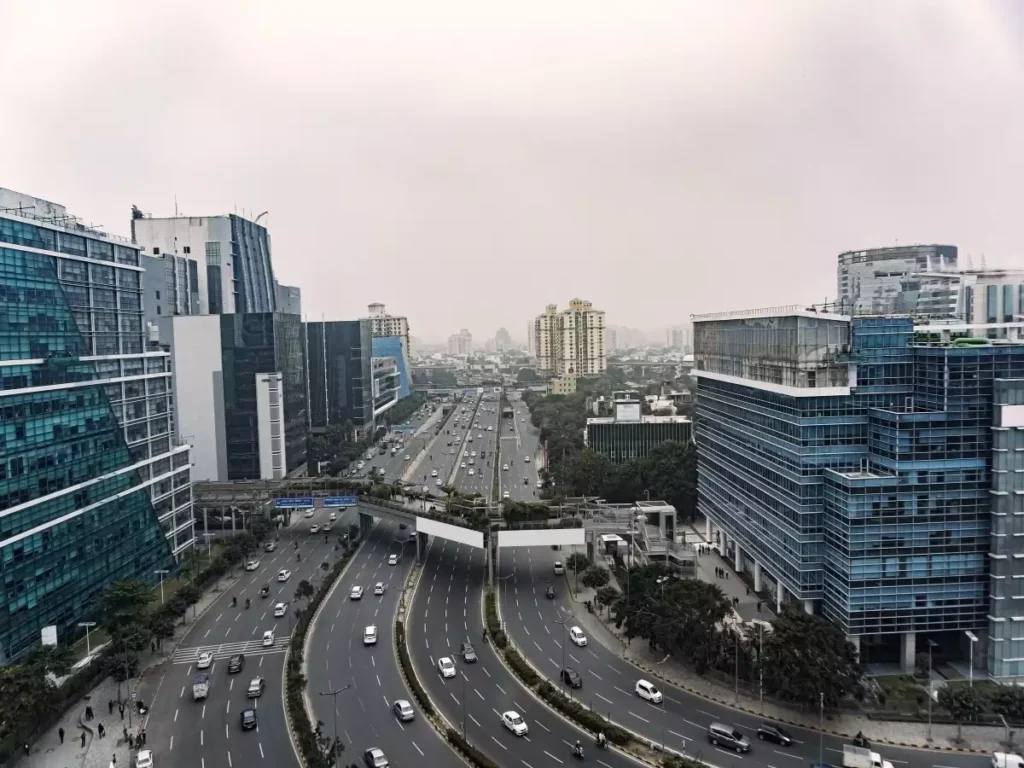
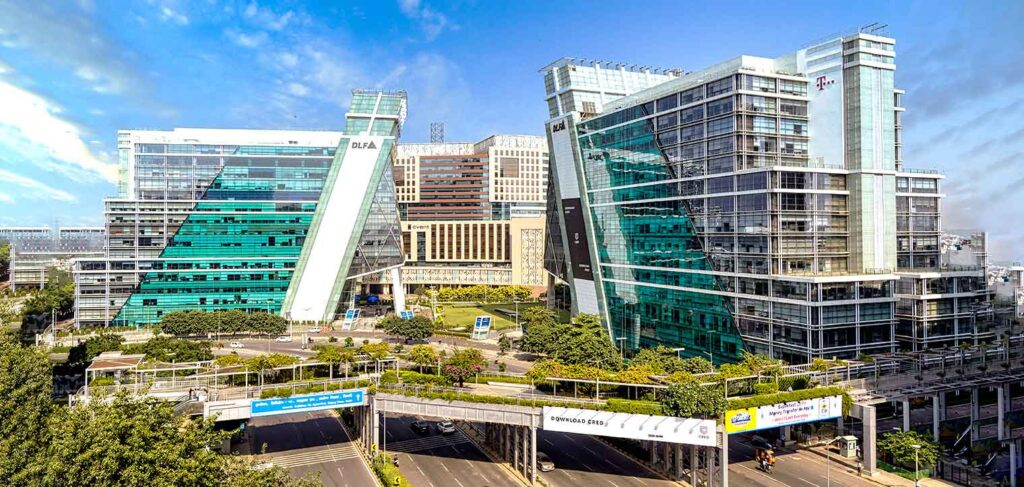
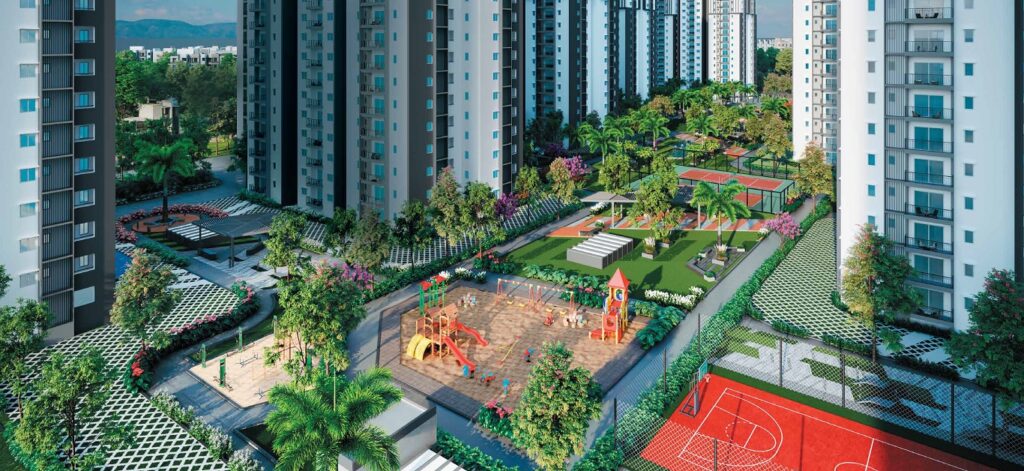
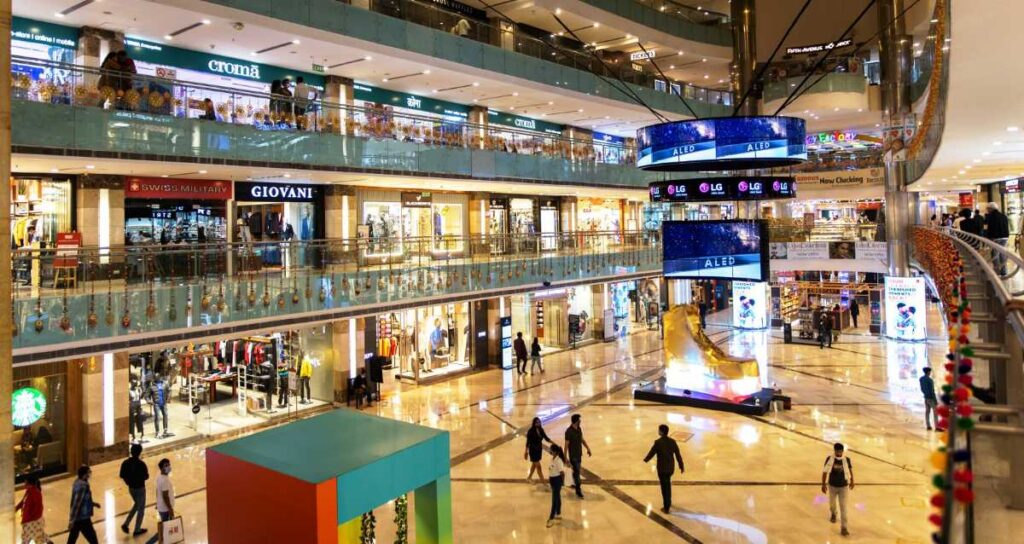
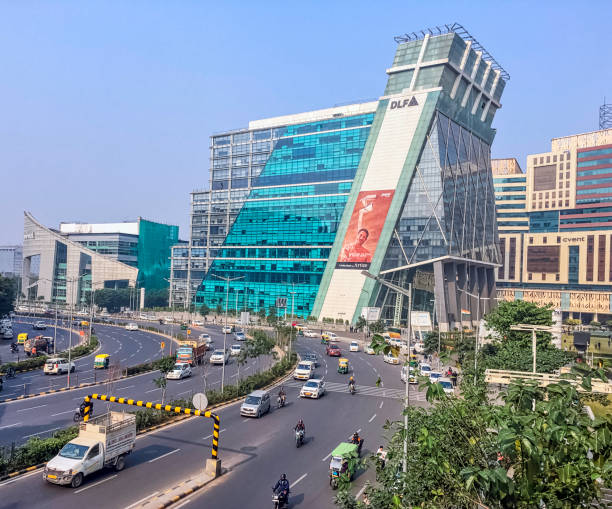
Parks and Green Spaces
Despite its rapid urbanization, Gurgaon maintains a strong focus on green spaces and public parks. The city boasts several recreational areas managed by the Gurgaon Metropolitan Development Authority (GMDA). Some of the most popular parks include:
- Leisure Valley Park (Sector 29) – Spanning 36 acres, this park is a preferred spot for outdoor activities and cultural events.
- Tau Devi Lal Biodiversity Botanical Garden (Sector 52) – A biodiversity park showcasing a variety of flora and fauna.
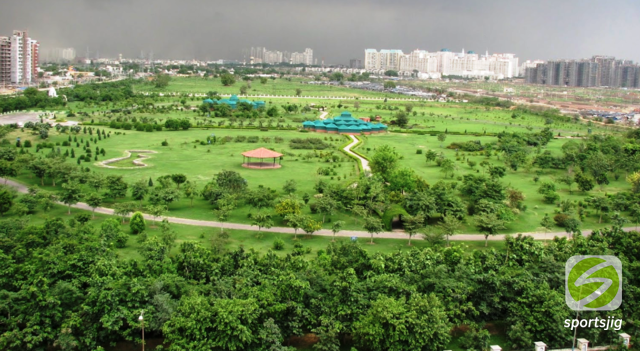



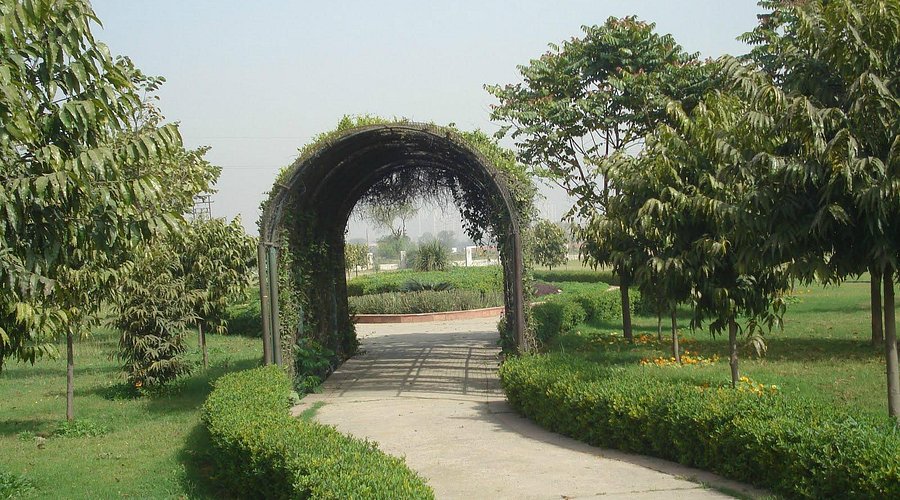
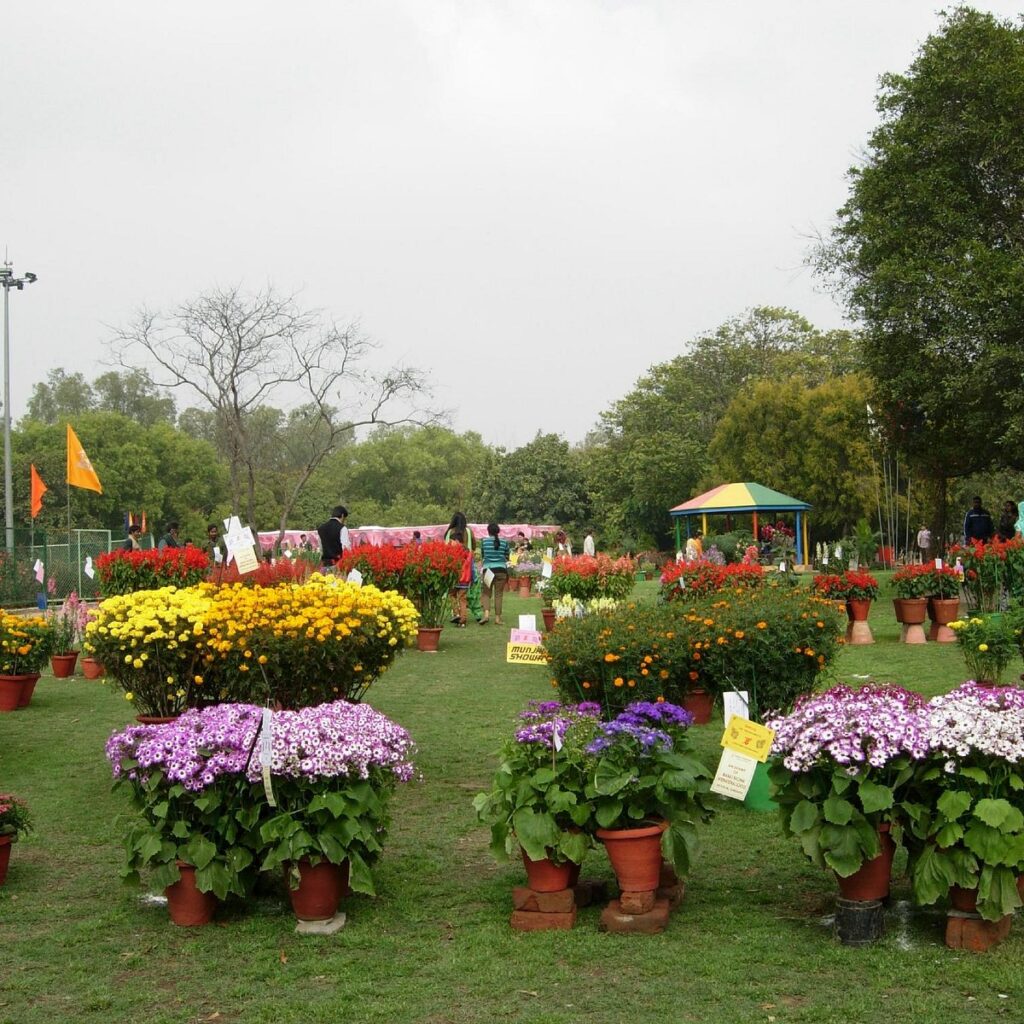
- Navisha Park (Malibu Towne, Sector 47) – A well-maintained green space for families and fitness enthusiasts.
- Netaji Subhash Chandra Bose Park (Sector 14) – Popularly known as HUDA Garden, this park is ideal for morning walks and yoga sessions.
- Aravali Biodiversity Park (MG Road) – A nature conservation area promoting environmental sustainability.
- Tau Devi Lal Park (Sector 23) – A beautifully designed park offering jogging tracks and picnic spots.
Gurgaon continues to expand its green initiatives, making efforts to balance urban growth with environmental sustainability by promoting eco-friendly infrastructure and maintaining biodiversity parks.
Culture of Gurgaon
Entertainment and Performing Arts
Gurgaon is a thriving cultural hub, offering a vibrant mix of entertainment, performing arts, and modern lifestyle experiences. The city is home to some of the most prominent performing arts venues, including Epicentre in Sector 44, which regularly hosts theatre performances, art exhibitions, and cultural events. Another iconic venue is Nautanki Mahal at the Kingdom of Dreams, located near IFFCO Chowk. This state-of-the-art theatre is known for its grand Bollywood-style musical productions, bringing India’s rich storytelling traditions to life.

Adding to the city’s cultural prominence, Gurgaon is also the birthplace of Bollywood actor Rajkummar Rao, who has gained nationwide recognition for his exceptional performances in Hindi cinema.
Languages and Dialects
The primary language spoken in Gurgaon is Hindi, but due to its cosmopolitan nature, English is widely understood and spoken, especially in corporate offices, shopping malls, and business districts. The Hindi spoken in Gurgaon is neutral and similar to that of Delhi, although regional influences from Haryana, Punjab, and Uttar Pradesh add distinct accents and phrases.
Gurgaon’s rapid growth as a global outsourcing hub has resulted in a large number of international call centers, where employees undergo professional training in neutral English pronunciation to enhance communication with native English speakers. Additionally, Haryanvi and Punjabi are commonly spoken, reflecting the local demographic composition.
Sports in Gurgaon
Gurgaon is an emerging destination for sports enthusiasts, offering state-of-the-art infrastructure for various games. The city boasts two major stadiums:
- Tau Devi Lal Stadium (Sector 38): This multi-sport facility includes cricket, football, basketball, and athletics grounds along with a sports hostel for training aspiring athletes. It is also the home ground of Amity United FC, a professional football club.
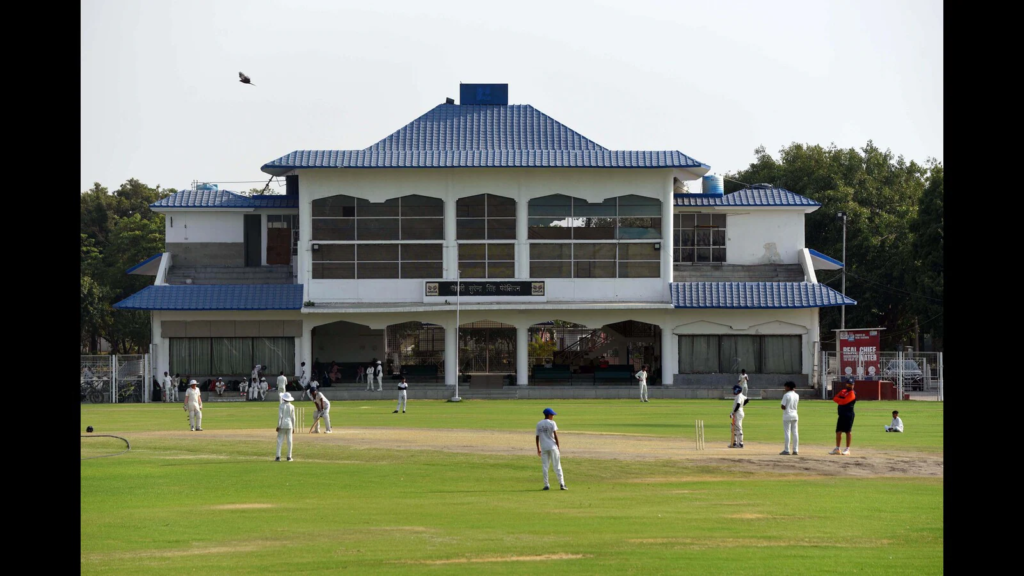
- Nehru Stadium: Primarily designed for football and athletics, this stadium hosts numerous local and national tournaments.

Gurgaon is also recognized as the “heart of India’s golfing country,” featuring nine golf courses, making it a preferred destination for golf enthusiasts.
Among the city’s famous sports personalities is Joginder Rao, a talented domestic cricket player who hailed from Gurgaon and made a mark in Indian cricket.
Economy of Gurgaon
Gurgaon, known for its rapidly growing economy, stands as a prominent commercial and industrial center in India. Located just on the outskirts of New Delhi, this vibrant city has evolved into one of the country’s economic powerhouses. With a per capita income ranking third in India, Gurgaon has become an essential part of the global economic landscape. The city’s proximity to the Indian capital further enhances its status as a lucrative business destination.
Early Economic Foundations and Growth
Gurgaon’s economic rise can be traced back to the 1970s when Maruti Suzuki Private Limited established its first manufacturing unit in the city, marking the beginning of its industrial expansion. This move set the stage for further investments in manufacturing and business development. Maruti’s presence in the city attracted attention, and in the following decades, DLF Limited, a real estate giant, acquired vast tracts of land, which laid the foundation for the city’s rapid urbanization. This strategic investment by DLF helped transform Gurgaon into a hub for commercial activity.
In the late 1990s, General Electric (GE) became the first major American corporation to set up operations in Gurgaon. GE’s successful entry into the city paved the way for several other multinational companies to follow suit. This led to the establishment of a wide range of outsourcing and IT companies in the region, further solidifying Gurgaon’s position as a major business hub. From software development and IT services to customer support through call centers, many global firms began to see Gurgaon as an ideal location to set up their operations.
A Hub for Global Corporations
Today, Gurgaon serves as the Indian headquarters for numerous leading international companies. Major corporations like Coca-Cola, Pepsi, BMW, Hyundai, and Agilent Technologies have chosen to establish a strong presence here. This trend has continued into the 2020s, with Cargill and Nissan also setting up shop in the city. The availability of skilled labor, excellent connectivity to the capital, and a thriving infrastructure network have made Gurgaon a desirable location for companies across various industries. In fact, many prominent aviation companies such as Air India, IndiGo, SpiceJet, and Vistara also have their headquarters in the city.
Business Process Outsourcing and IT: The Backbone of Gurgaon’s Economy
One of the key sectors contributing to Gurgaon’s economic success is the business process outsourcing (BPO) industry. The city has become a leading destination for outsourcing services in software development, IT support, and customer service. Many global call centers have operations in Gurgaon, providing employment opportunities for thousands of people. However, due to challenges such as inadequate public transport and the high cost of personal vehicles, most of these call centers have arranged for pooling services to transport employees to and from work.
Furthermore, the IT industry in Gurgaon has grown exponentially. Companies like Siemens Industry Software, based in the Gurgaon Business Park, have made significant strides in technological innovation. Siemens’ contributions include developing cutting-edge design software used by NASA for the digital design, simulation, and assembly of vehicles before building physical prototypes. This showcases the city’s growing influence in the tech industry, offering a fertile ground for the knowledge economy to thrive.
Infrastructure Challenges and Local Solutions
Despite its economic success, Gurgaon faces several infrastructure challenges that hinder its growth potential. The city’s public transport system remains underdeveloped, and many residents find it difficult to rely on public transport for commuting. Furthermore, the city’s water and power supply are often unreliable, forcing companies to depend on backup systems to ensure business continuity. In response to this, OMC Power, a distributed energy company headquartered in Gurgaon, provides decentralized energy solutions to address the city’s power shortages. This innovation demonstrates how local companies are stepping up to tackle the city’s infrastructure gaps.
Retail Sector Growth
Along with its industrial growth, retail has become a critical sector in Gurgaon’s economy. The city is home to 26 shopping malls, making it a major retail destination for consumers. These malls cater to a wide range of shopping needs, from high-end international brands to more affordable domestic options. The rapid expansion of commercial spaces and luxury retail outlets has made Gurgaon one of the top destinations for shopping and leisure in India.
The Future of Gurgaon’s Economy
Looking ahead, Gurgaon’s economy is poised to continue its upward trajectory. The growth of the IT sector, combined with a strong retail industry, places the city in a favorable position to capitalize on global business trends. However, to sustain its economic momentum, the city will need to address ongoing challenges, particularly in infrastructure development, public transportation, and the supply of utilities.
With its impressive economic credentials, Gurgaon stands as a testament to India’s growing business potential. As the city attracts more international investments and continues to evolve as a modern urban center, it remains one of the most exciting cities to watch in the coming years.
Law and Government in Gurgaon
Gurgaon, a bustling city at the heart of India’s economic landscape, is governed by the Municipal Corporation of Gurugram under a mayor-council system. This governance structure ensures the city operates efficiently with a focus on urban planning, infrastructure, and local services. The Gurugram Metropolitan Development Authority (GMDA), established in 2017, plays a pivotal role in overseeing the city’s growth and infrastructure. The GMDA is tasked with improving urban planning, managing resources, and facilitating sustainable development in this rapidly growing city.
In addition to these governing bodies, Gurgaon is also part of Haryana’s administrative framework, with its law enforcement and public services coming under the state government’s jurisdiction. The city’s infrastructure and governance systems are designed to manage the demands of its growing population and commercial significance.
Crime and Law Enforcement in Gurgaon
Gurgaon, while prosperous, faces its share of crime-related challenges. In 2022, the city recorded a variety of criminal incidents, each of which has been carefully monitored by local authorities. Key statistics provide insights into the types of crimes prevalent in the city and how law enforcement has responded.
- Homicides in 2022 numbered 88, with the police solving 80% of the cases, showing significant efficiency in handling serious crimes.
- Rape cases dropped by 15%, with 187 incidents reported. This decline can be seen as a positive trend in addressing such crimes.
- Child sex abuse and molestation also saw declines of 21% and 9% respectively, indicating progress in curbing these offenses.
- Robbery and loot cases saw a slight decline of 2%, with 62 incidents, and police were able to resolve 88% of these cases.
- Burglary, a recurring concern, remained significant with 353 incidents recorded, though there was a 5% decline in comparison to the previous year.
- Snatching incidents, on the other hand, saw an alarming 27% rise, with 216 cases reported. However, the tracing ratio for these cases significantly improved from 46% to 73%, showing an effective response from law enforcement.
- Vehicle theft cases, though high at 3,523, saw a 2% decline, reflecting efforts to combat the growing issue of stolen vehicles.
The Narcotic Drugs and Psychotropic Substances Act resulted in the seizure of 465 kg of ganja, 1.8 kg of sulpha drugs, 1.9 kg of heroin, and 25 gm of MDMA, highlighting the city’s ongoing struggle with drug-related offenses. Gambling and Excise Act violations also saw significant cases, with authorities seizing large quantities of alcoholic beverages and illegal liquor bottles.
Traffic and Public Safety
Traffic violations remain a pressing issue in Gurgaon, with the police issuing over 7.33 lakh traffic tickets for violations. The city’s rapid growth and increasing vehicle numbers have led to heightened congestion and traffic enforcement challenges. In response, Gurgaon has also initiated a scrappage program, impounding 1,458 vehicles—specifically diesel vehicles older than 10 years and petrol vehicles older than 15 years. This initiative aims to reduce pollution and manage the growing number of vehicles in the city.
Law Enforcement Leadership
The Gurgaon Police are led by the Commissioner of Police, a senior officer responsible for overseeing law enforcement activities across the city. The police department forms a crucial part of the Haryana Police force and works in coordination with state authorities to ensure safety and order. Within Gurgaon, there is a separate traffic police department, which is headquartered in Sector 51, reflecting the need for focused traffic management.
The city’s fire protection services are provided by the Municipal Corporation of Gurugram through four fire stations strategically located across the city: in Sector 29, Sector 37, Udyog Vihar, and Bhim Nagar. These stations are equipped to handle emergencies and mitigate the risks associated with urban fires.
Cybercrime and Modern Challenges
In 2018, Gurgaon made significant strides in addressing the growing threat of cybercrime by inaugurating its first cyber police station. Cyber-related offenses, such as fraud, online banking crimes, social media fraud, and data theft, have increased in recent years. The city receives approximately 1,500 complaints related to cybercrime every month. Despite the growing number of incidents, there is a shortage of in-house cyber experts, leading the police to outsource many of these cases to external organizations. The rise of digital platforms has made it necessary for law enforcement to evolve its approach to combating online crimes effectively.
Education in Gurgaon
Gurgaon is home to a vibrant and growing educational landscape, providing a wide range of educational opportunities across various levels. The city is known for its quality schools, universities, and research institutes, catering to the diverse needs of its residents and attracting students from across the country and beyond. The education system in Gurgaon is well-established and continues to evolve with a focus on academic excellence and innovative learning.
School Education in Gurgaon
The public school system in Gurgaon is managed by the Government of Haryana and follows the Haryana Board of School Education curriculum. In addition to government-run schools, there are numerous private schools affiliated with prestigious boards such as the Central Board of Secondary Education (CBSE), Indian Certificate of Secondary Education (ICSE), and the International Baccalaureate (IB). This gives parents and students a variety of options when choosing the right school for their educational journey.
Some of the top schools in Gurgaon include well-known names like Alpine Convent School, Ambience Public School, and Amity International School, each offering quality education with a focus on holistic development. Other prominent schools like Blue Bells Model School, Delhi Public School, and Gems International School also contribute to the city’s reputation as an educational hub. These schools often have state-of-the-art facilities, a range of extracurricular activities, and a commitment to academic excellence.

In addition to these schools, there are specialized institutions like Heritage Xperiential Learning School, K.R. Mangalam World School, and Lancers International School that focus on experiential and international learning, preparing students for global challenges. Other notable institutions include Matri Kiran, Ryan International School, and SCR Public School, which maintain high standards in education and student welfare.

Higher Education and Universities
Gurgaon also boasts a number of universities and higher education institutions that offer a broad range of undergraduate, postgraduate, and doctoral programs. These universities play an important role in shaping the academic landscape of the city and contribute to its growing reputation as an educational destination.
Gurugram University, established by the Haryana government, is one of the prominent institutions in the region, offering a range of degree programs. Sushant University is another well-known institution, with a strong emphasis on technical education and research. The NorthCap University has gained recognition for its engineering, management, and computer science programs, while GD Goenka University offers diverse courses in fields such as design, engineering, and business.

In addition to these, K.R. Mangalam University and Amity University are key players in the higher education sector in Gurgaon, known for their comprehensive academic offerings and modern infrastructure. Management Development Institute (MDI) is an internationally recognized business school that attracts students seeking management education. Great Lakes Institute of Management and Infinity Business School are also renowned institutions for management studies, while BML Munjal University and Shree Guru Gobind Singh Tricentenary University offer specialized programs in engineering, management, and humanities.

Research and Specialization
Gurgaon is not only home to academic institutions but also houses leading research centers that focus on advanced studies and specialized fields. The National Brain Research Centre (NBRC), located in the nearby town of Manesar, is a premier research institution dedicated to the study of neuroscience. The NBRC is recognized for its groundbreaking research in brain science and provides a platform for students and researchers interested in the field of neuroscience.

The city’s educational ecosystem also supports various professional courses, with institutions offering programs in fields like law, architecture, design, hospitality, and healthcare. These specialized institutes cater to the growing demand for skilled professionals in Gurgaon’s diverse industries, including IT, finance, real estate, and healthcare.
Transport in Gurgaon
Gurgaon, one of the rapidly growing cities in India, is well-connected through various modes of transportation. Its strategic location near the national capital, Delhi, makes it a crucial hub for commuting, business, and travel. The city’s infrastructure is continually being upgraded to accommodate its rising population and increasing demand for efficient transport options.
Roadways
The road network in Gurgaon is robust, with National Highway 48 (NH48) being the major artery linking the city to Delhi and Mumbai. This highway plays a vital role in connecting Gurgaon to other cities in the region. One of the most important stretches on this highway is the Delhi-Gurgaon Expressway, a 27.7-kilometer stretch that provides a smooth, fast route between Delhi and Gurgaon. This expressway has significantly reduced travel time between the two cities, making it one of the busiest and most efficient routes in the region. The rest of NH48 has been expanded to six lanes, further enhancing the flow of traffic and easing congestion.
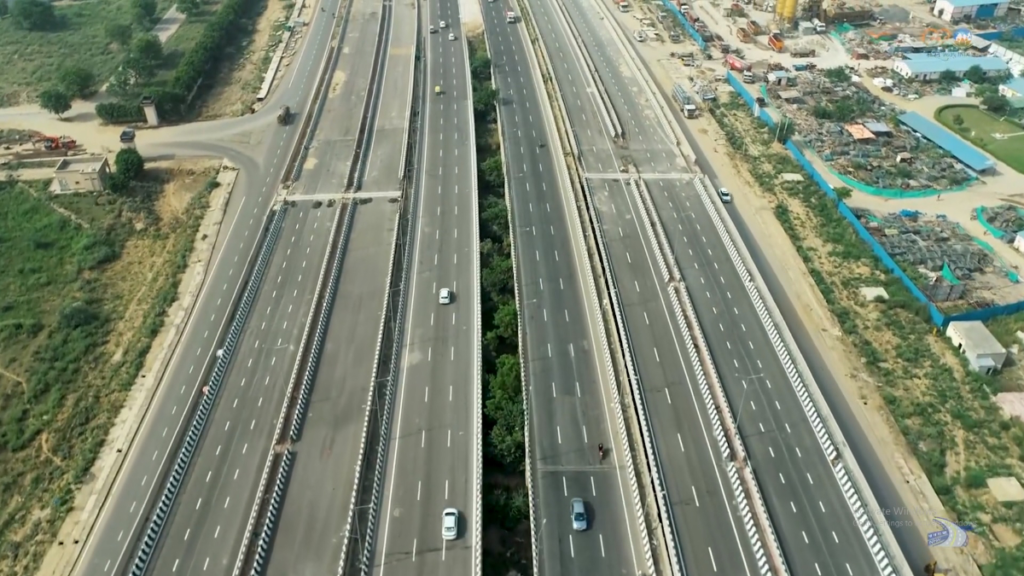
In addition to the Delhi-Gurgaon Expressway, there are several other roads that connect Gurgaon to neighboring areas. These roadways are essential for facilitating both local and long-distance travel.
Railways
Intercity Rail Services
Gurgaon is connected to the extensive Indian Railways network, with the Gurgaon Railway Station being the primary station in the city. Operated by Northern Railway, this station serves as a key point for travelers coming to and from Gurgaon. Additionally, the city is served by several other railway stations, including Tajnagar Railway Station, Dhankot Railway Station, Ghari Harsaru Railway Junction, and Farrukhnagar Railway Station. These stations cater to both passengers and freight, making rail transport an integral part of the city’s infrastructure.

Indian Railways has embarked on a major modernization initiative for several railway stations in Gurgaon, including the Gurgaon Railway Station, Ghari Harsaru, and Farrukhnagar. The goal is to enhance the passenger experience with better amenities, improved facilities, and modernized infrastructure.
Delhi Metro
The Delhi Metro plays a significant role in enhancing urban mobility in the region. Gurgaon is connected to the Delhi Metro network through the Yellow Line, which serves five stations in the city: Millennium City Centre, IFFCO Chowk, MG Road, Sikanderpur, and Guru Dron Acharya. These stations are part of the larger Delhi Metro system, providing seamless connectivity to Delhi and other NCR regions.
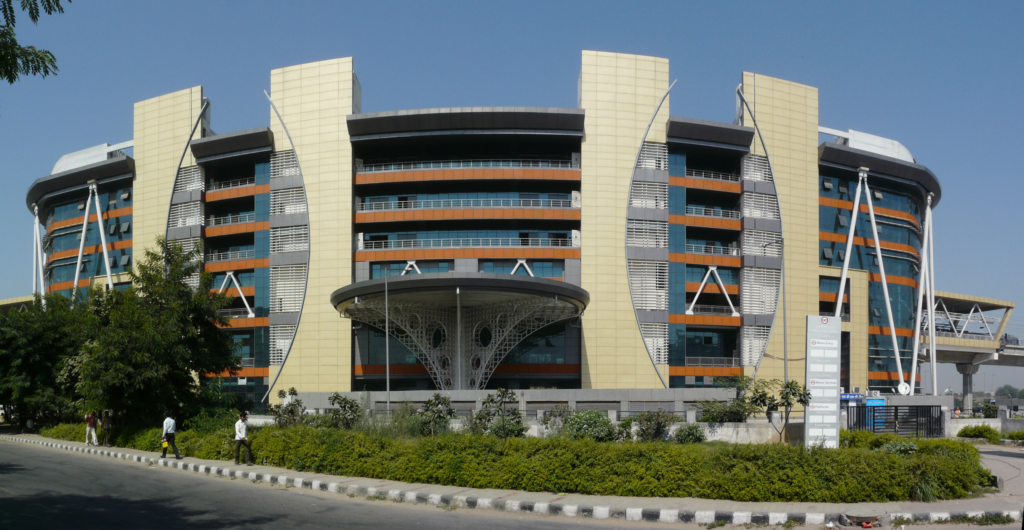
There are plans to expand the Delhi Metro network in Gurgaon, with new lines and stations to be added in the coming years. This expansion will further strengthen the city’s public transport system and ease congestion on roadways.
Rapid Metro
The Rapid Metro Gurgaon is another important mode of transport in the city. This elevated metro line covers a distance of 11.7 kilometers and has eleven stations, including an interchange with the Yellow Line of Delhi Metro at Sikanderpur Metro Station. The Rapid Metro became operational in November 2013 and has since become a popular mode of transport for thousands of commuters in the city.

Currently, the Rapid Metro operates three-coach trains, and the service runs in a loop to provide efficient connectivity to key business and residential areas in Gurgaon. The daily ridership is estimated to be around 33,000 people. Additionally, a phase 2 of the Rapid Metro project is in progress, which will bring the total number of stations to 16, further enhancing the metro’s coverage.
Airways
Indira Gandhi International Airport, located near the city limits of Gurgaon along National Highway 8, is the primary airport serving the region. This international airport, one of the busiest in India, provides easy access for domestic and international travelers visiting Gurgaon. The airport is just a short distance away, making Gurgaon an ideal location for business travelers and tourists alike. The proximity to the airport adds to the city’s appeal as a commercial and business hub.

Public Transit
Gurgaon has been taking significant steps to improve its public transportation system. In November 2013, the city launched the Raahgiri Day initiative, inspired by the Ciclovia program, where certain streets are closed to motor vehicles on Sunday mornings to promote non-motorized transport and outdoor activities. This initiative has been successful in encouraging a more sustainable and healthier form of transport, and it was the first such initiative in India, later followed by other cities like Delhi and Noida.
Looking ahead, Gurgaon is also expected to introduce pod taxis, which would be a first in India. This innovative transit system aims to provide an efficient, futuristic, and environmentally friendly mode of transport for the city’s residents.
Buses and Other Transit Systems
Haryana Roadways operates intercity buses in Gurgaon, connecting the city with other regions in Haryana and neighboring states. These buses offer affordable travel options for commuters and are an important part of the public transport system.
The city’s ongoing development, along with improvements in transportation infrastructure, continues to attract people and businesses to Gurgaon. The public transit network, including metro, buses, and the innovative Rapid Metro, helps to reduce traffic congestion, making commuting in the city more efficient. With plans for further expansion and modernization, Gurgaon is well on its way to becoming a model city for urban mobility in India.
Utilities and Issues in Gurgaon
Electricity
Electricity in Gurgaon is supplied by Dakshin Haryana Bijli Vitran Nigam, a government-owned entity. With a power consumer base of around 360,000 people, the city experiences an average power load of 700-800 MW. Despite the efforts to manage this load, Gurgaon faces frequent power outages, especially during the summer months when power consumption peaks. The issues are exacerbated by the aging equipment used by the power department, including transformers, panels, and transmission lines, which are either outdated or overburdened. The increasing demand for electricity, coupled with the infrastructure challenges, continues to be a persistent issue in the city.
Work Culture Issues
Gurgaon has gained a notorious reputation for its toxic work culture, which is often cited as one of the worst in India. Compared to other cities like Bangalore, Pune, and Navi Mumbai, where work environments are generally considered healthier, Gurgaon is known for its stressful and abusive work culture. The competitive corporate atmosphere, combined with long working hours and high-pressure environments, has contributed to the city’s image as a difficult place for employees to thrive without experiencing burnout or mental health issues. This has led to widespread concern about work-life balance in the city, especially among the younger workforces.
Flooding Issues
Another significant issue that Gurgaon faces is urban flooding, particularly during the monsoon season. The city experiences major traffic jams and flooding in areas like Hero Honda Chowk, Basai, Dhankot, and Sector 37, which make headlines every year. A research report suggests that the city’s natural water body linkages have been disrupted due to excessive construction in the past few decades. This, combined with the deterioration of infrastructure like the HUDA master drainage lines, has resulted in frequent flooding. The drainage systems often choke or burst, leading to water logging and significant traffic disruptions.
Historically, Gurgaon had several natural water bodies, including Ghata Jheel, Badshahpur Jheel, and Khandsa Talab, which were linked to the Najafgarh drain and, eventually, the Yamuna River. However, the encroachment on these natural water bodies and their drainage channels has severely impacted the natural flow of water. Despite efforts by various agencies to create artificial water bodies to mitigate the situation, these measures have largely failed due to unpredictable rain patterns and the inability to manage the water flow effectively. This has led to the deployment of water pumps to control flooding, although the situation often remains unresolved.
The Punjab & Haryana High Court has previously banned the use of groundwater for construction activity in the region, citing concerns about the depletion of natural water sources. Furthermore, the National Green Tribunal (NGT) has reprimanded authorities for the concretization of drains, which further hampers the city’s ability to manage water flow and drainage effectively.
Conclusion
While Gurgaon is a bustling urban hub with rapid development and modernization, it faces significant challenges related to utilities and infrastructure. The power supply issues, toxic work culture, and urban flooding are all critical concerns that need urgent attention from both government and corporate sectors. Addressing these challenges effectively will be essential for the city’s continued growth and the well-being of its residents.

